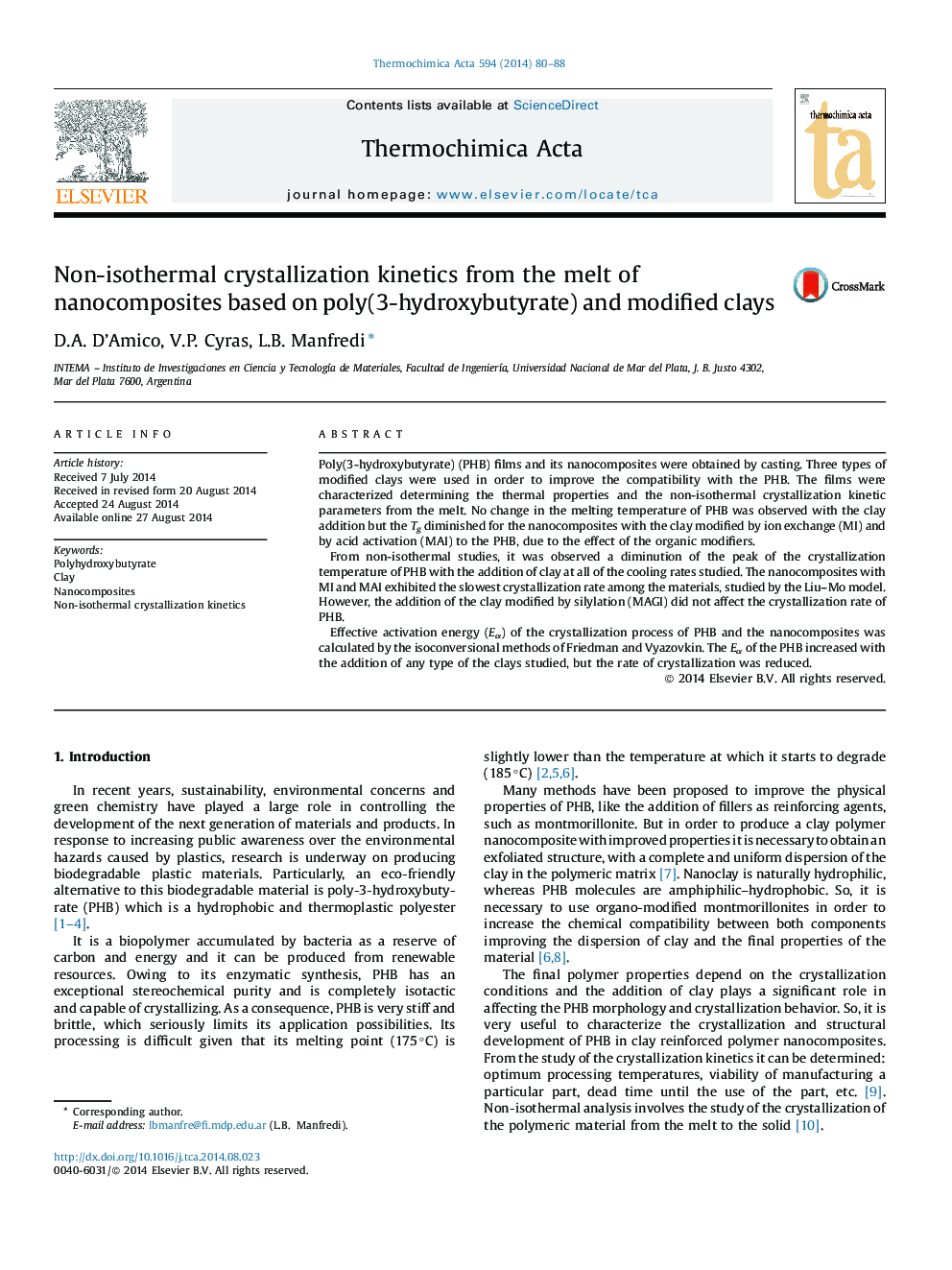| کد مقاله | کد نشریه | سال انتشار | مقاله انگلیسی | نسخه تمام متن |
|---|---|---|---|---|
| 673224 | 1459490 | 2014 | 9 صفحه PDF | دانلود رایگان |

• Poly(3-hydroxybutyrate) (PHB) films and its nanocomposites were obtained by casting.
• Three types of clays were modified by ion exchange, activation and silylation.
• Non-isothermal crystallization kinetic parameters from the melt were determined.
• Effective activation energy of the PHB increased with clay addition.
• The crystallization rate of PHB was reduced in the nanocomposites.
Poly(3-hydroxybutyrate) (PHB) films and its nanocomposites were obtained by casting. Three types of modified clays were used in order to improve the compatibility with the PHB. The films were characterized determining the thermal properties and the non-isothermal crystallization kinetic parameters from the melt. No change in the melting temperature of PHB was observed with the clay addition but the Tg diminished for the nanocomposites with the clay modified by ion exchange (MI) and by acid activation (MAI) to the PHB, due to the effect of the organic modifiers.From non-isothermal studies, it was observed a diminution of the peak of the crystallization temperature of PHB with the addition of clay at all of the cooling rates studied. The nanocomposites with MI and MAI exhibited the slowest crystallization rate among the materials, studied by the Liu–Mo model. However, the addition of the clay modified by silylation (MAGI) did not affect the crystallization rate of PHB.Effective activation energy (Eα) of the crystallization process of PHB and the nanocomposites was calculated by the isoconversional methods of Friedman and Vyazovkin. The Eα of the PHB increased with the addition of any type of the clays studied, but the rate of crystallization was reduced.
Journal: Thermochimica Acta - Volume 594, 20 October 2014, Pages 80–88